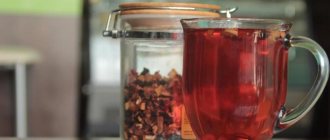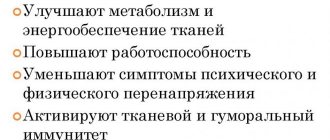The healing power of this plant has been known since ancient times. It was used to eliminate uterine pain in women, treated indigestion, insomnia, skin inflammation, and was given as an antidote for snake bites. Today, medicinal chamomile is included in official pharmacopoeias and is used in the cosmetic industry and folk medicine.
Chemical composition and properties
Chamomile flowers, leaves and stems are used for medicinal purposes. They contain:
- organic acids: anthemisic, salicylic, isovaleric and others;
- polysaccharides;
- amino acids;
- tannins;
- vitamins C, group B, carotenoids;
- coumarins, bioflavonoid derivatives, bitters, gum and other bioactive compounds;
- dried flower baskets concentrate up to 0.8% essential oil.
Chamomile has a pronounced anti-inflammatory, antimicrobial, moderate antispasmodic, analgesic, expectorant and diuretic effect, calms the nervous system, reduces allergies, and promotes the elimination of radionuclides.
The essential oil of the plant stimulates the secretion of bile, dilates blood vessels, eliminates increased gas formation, and has a bacteriostatic effect.
Definition
Chamomile is a weedy annual, wintering plant, up to 40 cm high. The root is a taproot with small lateral branches.
The stem is bare, straight, branched. Leaf blades are twice pinnately dissected. Lobules lanceolate, pointed. Homogeneous baskets with outer ligulate flowers and golden-yellow middle ones, collected in a corymbose inflorescence. The fruit is a silvery, cylindrical achene. Blooms in June - August, bears fruit in July - October. Distributed throughout Russia. (Trukhachev V.I., 2006) (Shishkin B.K., 1961)
Medical indications
Chamomile preparations help:
- reduce the intensity of inflammation and soothe pain during exacerbation of gastrointestinal diseases: gastritis, cholecystitis, gastropathy, colitis;
- relieve cough and sputum discharge during infectious processes, acute and chronic inflammation of the respiratory system;
- reduce pain from migraines and dental problems;
- eliminate symptoms of inflammation of the bladder and kidneys, female gynecological diseases;
- relieve hemorrhoid symptoms;
- reduce emotional stress, eliminate insomnia during stressful conditions;
- relieve signs of diseases of the skin and mucous membranes, including those of traumatic, infectious and allergic origin: irritation, abrasions, rashes, furunculosis, dermatitis, eczema.
Pharmaceutical chamomile is an effective, but low-toxic plant, approved for use by people with serious health problems, including the elderly and weakened. It is rational to use both in acute conditions and as a preventive measure for the development of diseases.
Contraindications
In order for the treatment to be beneficial, it is necessary to take into account not only the medicinal and beneficial properties, but also the contraindications of chamomile that it has. Plant preparations should not be taken if:
- schizophrenia,
- mental disorders,
- heavy menstruation.
Although there are recommendations about taking the infusion for toxicosis, however, other sources prohibit the use of chamomile during pregnancy.
Many people have the false impression that chamomile is an easy, pleasant-tasting medicinal plant that can be drunk without following dosages. However, it is not. In case of overdose, chamomile has side effects such as:
- headache,
- mental disorder,
- depression of the central nervous system,
- hoarseness,
- cough,
- menstrual disorder,
- decreased muscle tone.
Also, you should not take the plant for a long period. You should definitely take breaks.
Sources:
D.S. Ivashin, Z.F. Katina. Medicinal plants of Ukraine.
L.G. Dudchenko, A.S. Kozyakov. Spicy-aromatic and spicy-flavoring plants.
Rim Akhmedov. Plants are your friends and foes.
I.N. Putyrsky, V. Prokhorov. Universal encyclopedia of medicinal plants.
Advice from the traditional healer Evdokia. Herbalist, illustrated reference book.
M.A. Nosal, I.M. Nosal. Medicine plants and methods of their adoption among the people.
A.K. Bondarenko, V.G. Forelock. Medicinal plants of the south of Ukraine. Procurement, reproduction, application.
V.V. Reshetnyak. Herbalist.
V.Ya. Berry. Medicinal plants in dermatology and cosmetology.
S.Ya. Sokolov, I.P. Zamotaev. Handbook of medicinal plants.
G.N. Kotukov. Cultivated and wild medicinal plants.
Methods of application
Chamomile actively acts as an independent remedy, as well as in combination with other herbs, complementing their medicinal properties.
Water infusions and decoctions of the plant are used internally, externally and locally: they make compresses, poultices, lotions, enemas, rinses, and add them to medicinal baths.
Preparation of chamomile infusion:
- 2–3 tbsp. l. dry raw materials, pour 300 ml of boiling water, leave in a thermos or sealed container for 30 minutes;
- filter the liquid.
To obtain a more concentrated product, boil the herb in water over low heat for 10–15 minutes, then let it brew for 0.5–2 hours.
Homemade medicinal creams and ointments with chamomile are prepared by mixing crushed flowers with a fat base: vegetable or butter, petroleum jelly. If necessary, other components are added according to the recipe: alcohol, honey, glycerin.
Treatment with chamomile is carried out in short courses: 1–2 weeks or long courses: up to six months. In each case, the scheme depends on the individual characteristics of the patient and the severity of the condition.
pharmaceutical camomile
An infusion of chamomile flowers is taken orally for:
- diseases of the gastrointestinal tract
- diseases of the liver and biliary tract
- flatulence, stomach cramps
in the form of microenemas for:
- hemorrhoids
- colitis
- rectal sphincter fissures.
Chamomile juice is used internally for:
- treatment of gastritis
- treatment of gastric ulcer
- spasms and pain in the stomach and intestines
- flatulence
- diarrhea
- liver diseases
- gallbladder and bladder
- renal colic.
At the end of an exacerbation or during remission of GERD, herbal medicine or mineral waters may be prescribed.
It is recommended to prescribe the following fees: 1. Celandine (grass) - 10.0 g; common yarrow (herb) - 20.0 g; chamomile (flowers) - 20.0 g; St. John's wort (herb) - 20.0 g. Take 1-2 glasses of decoction per day. 2. Chamomile (flowers) - 5.0g; calendula officinalis (flowers) - 20.0 g; coltsfoot (leaves) - 20.0 g. Take 1 tablespoon of infusion 3-4 times a day 15-20 minutes before meals.
3. Chamomile (flowers) - 5.0 g; St. John's wort (herb) - 20.0 g; large plantain (leaves) - 20.0 g. Take 1 tablespoon of infusion 3-4 times a day 15-20 minutes before meals. (V.F. Privorotsky, N.E. Luppova Part I. Gastroesophageal reflux disease (end).
The doctor advises folk remedies for the treatment of gastritis with low acidity (all methods require long-term use, from 6 months to 2-3 years) herbal mixture:
Knotweed and St. John's wort grass - 4 parts each, blueberry leaves - 3 parts, yarrow inflorescences, immortelle flowers, centaury grass - 2 parts each, peppermint and chamomile leaves - 1 part each; 4 tbsp. spoons of the mixture pour 1 liter of cold water overnight, put on the stove in the morning, bring to a boil, boil for 5-7 minutes, leave in a warm place for 20 minutes, strain. Drink 1 glass 4-5 times a day half an hour before meals. (Okulova G. Anacid gastritis. What to do?).
Collections of medicinal plants recommended for children with gastritis, enteritis, enterocolitis can be viewed here.
In combinations with other plants, chamomile is also used for prostate adenoma, chronic glomerulonephritis, chronic prostatitis and cervical cystitis.
In phytobalneology, chamomile inflorescences are used in the treatment of post-dysenteric colitis, dysbacteriosis, and chronic gastritis; in endocrinology - to normalize the functions of the endocrine glands and metabolic processes; in obstetrics and gynecology - for dysmenorrhea, algodismenorrhea, vulvitis, endocervicitis, vaginitis, cracked nipples in nursing mothers; in dentistry - for periodontal disease, gingivitis, periodentitis, stomatitis; in dermatology - as a depigmenting, antimycotic, for seborrhea, hyperkeratosis of the scalp.
In homeopathy, chamomile essence is used for dyspepsia in children, exudative diathesis, stomach cramps, and flatulence.
Chamomile flowers
(lat.
Chamomillae flores
) - the active substance
of chamomile flowers
(
Flores Chamomillae officinalis
) is produced by Krasnogorskleksredstva (Russia).
Composition and release form
: medicinal plant raw materials for preparing infusions contain essential oil (not less than 0.3%), azulene, anthemisic acid, flavonoids and other substances;
in round briquettes of 7 g; 6 pcs in a polyethylene film strip pack, 1 pack in a cardboard box. Pharmachologic effect
:
- local anti-inflammatory
- stimulating tissue repair
- antispasmodic
- antiseptic
- radioprotective
- tanning
- antihemorrhoidal
Directions for use and dosage
: 1 briquette is filled with 200 ml of boiling water, heated in a boiling water bath for 15 minutes, filtered, and brought to the original volume. Take warm orally, after meals, ½ - ⅓ glass 3-5 times a day. Externally used for rinsing, lotions and baths.
Ready-made dosage forms of chamomile
Romazulan
is a drug whose active ingredient is
chamomile flower
(lat.
Chamomillae recutitae floridis extract
), an anti-inflammatory and deodorizing agent used internally for:
- gastritis
- colitis
- flatulence
externally (rinses, compresses, enemas) - for:
- gingivitis
- stomatitis
- otitis media
- vaginitis
- urethritis
- cystitis
- inflammatory dermatoses
- trophic ulcers.
According to the pharmacological index, romazulan
belongs to the groups “Antiseptics and disinfectants”, “Other non-narcotic analgesics, including non-steroidal and other anti-inflammatory drugs”. According to ATC - to the group “Other drugs” and has code A01AB11.
Composition and release form
:
100 ml of concentrate for the preparation of a solution for oral, external or local use contains 95.881 g of chamomile extract, 0.037 g of azulene and 4.082 g of Tween-80; in bottles of 50 and 100 ml, 1 bottle in a box.
Directions for use and doses
:
orally, for gastrointestinal diseases - ½ teaspoon of solution diluted in 200 ml of warm water, 2-3 times a day. Course - 2-3 weeks.
Externally, locally, for microenemas - dilute 1.5 tablespoons in 1 liter of water (used for rinsing, washing, instillation, compresses, tampons). Side effects:
allergic reactions are possible.
Rotokan ®
(
Rotocanum®
) - extract for oral administration for topical use (liquid);
dark glass bottle (bottle) 50 ml. Has the active ingredient: calendula officinalis flower extract + chamomile flower extract + yarrow herb extract (calendulae officinalis floridis extract + chamomillae recutitae floridis extract + achillea millefolii herbae extract). According to the pharmacological index, Rotokan ®
belongs to the group “Other non-narcotic analgesics, including non-steroidal and other anti-inflammatory drugs”. According to ATC - to the group “Other drugs” and has code A01AB11.
Composition and release form
: hydroalcoholic extract from a mixture of medicinal plant materials: chamomile flowers, calendula flowers (marigold) and yarrow herb in a ratio of 2:1:1; in dark glass bottles of 50 ml.
Directions for use and doses
:
use an aqueous solution prepared at the rate of 1 teaspoon of rotokan per 1 glass of warm boiled water (if well tolerated, the concentration can be increased to 3 teaspoons). For diseases of the oral mucosa, the rotokan solution is used by application (15–20 minutes) or rinsing the mouth (1–2 minutes) 2–3 times a day for 2–5 days. Periodontal treatment is carried out after removing dental plaque and curettage of pathological gum pockets. Thin turundas, generously moistened with a rotokan solution, are inserted into the gum pockets for 20 minutes. The procedure is carried out once a day, every day or every other day, 4–6 times in total.
In gastroenterology, rotokan is used orally and in microenemas. Orally - ½ - ⅓ glass of solution 30 minutes before meals or 40-60 minutes after meals 3-4 times a day. Course - 2-3 weeks.
Microenemas with 50–100 ml of solution are used after a cleansing enema 1–2 times a day. Course - 3–6 days.
Other uses of chamomile
The photoprotective effectiveness of chamomile extracts is known.
In cosmetics, it is used in products for children (soaps, creams, lotions), toothpastes, face and hand creams, lipsticks, tanning products, body skin care oils, shampoos and rinses. Chamomile extract contains flavonoids combined with vitamin C, which provides an antioxidant complex that protects the skin from adverse environmental influences. Therefore, it is included in the composition of new generation decorative cosmetics.
In everyday life, a decoction of chamomile is used to wash the face, believing that the skin becomes velvety and soft. Chamomile extract has the ability to absorb toxins and products of cellular metabolism. Cosmetologists recommend that they wash their faces instead of soap. Chamomile extract is included in cleansing cosmetics, tonics, and lip care products. Cosmetic masks containing chamomile oil are recommended for dry skin and help cleanse and regenerate it, improving its structure.
Chamomile tincture is included in nourishing creams that normalize metabolic processes in the skin, tone and nourish it.
Chamomile oil is used in aromatherapy for insomnia, migraines, inflammation of the skin, as well as burns and eczema, recommended for asthma, bronchitis, cough, flu, cystitis, irritability, useful for children and the elderly. For depression, professional aromatherapist Joan Redford recommends using chamomile oil in a burner or bath. Dried chamomile, being part of aromatic herbal pillows, promotes muscle relaxation. Applications with chamomile oil help prevent allergic reactions after insect bites and are recommended for bruises. Lotions with chamomile oil are used for heat stroke and sprains, rubbing - for sunburn, insomnia. Bandages with chamomile oil are applied to the wounds, and for toothache, a cotton ball with oil is placed on the sore tooth. For skin irritation in newborns, massage, baths, and aromatherapy with chamomile oil are used.
In the food industry, chamomile essential oil is used to flavor liqueurs, wines (for example, sherry) and bitters; chamomile leaves are used as a spice. The above-ground part is used as a substitute for tea.
The effect of chamomile on stomach acidity
Chamomile is recommended for increased acidity of gastric juice. (V.F. Privorotsky, N.E. Luppova Part II. Chronic gastritis and gastroduodenitis (end).
Chamomile contraindications
Despite its widespread use, there are some contraindications to taking chamomile-based products.
Thus, doctors do not recommend the use of chamomile during pregnancy. The fact is that chamomile flowers can significantly stimulate the production of estrogens by the ovaries, and during normal pregnancy their quantity should be small. An increased content of estrogens can lead to the most unpredictable consequences, including termination of pregnancy. If a person suffers from diseases of the urinary tract (bladder or kidneys), chamomile should be used with caution. In addition, for a variety of mental disorders, chamomile can lead to inhibition of certain brain functions.
The beneficial properties of chamomile are lost in case of an overdose of drugs based on it. Moreover, uncontrolled use of this medicinal plant can lead to attacks of headaches, irritability, and dizziness. Chamomile flowers are not recommended for use in infusions in the treatment of conjunctivitis.
However, the beneficial properties of chamomile have a much greater positive effect on the body than the possible harm from its use; the main thing is to use the medicinal plant for its intended purpose, carefully following the recommendations. So before you start treatment with it, be sure to consult your doctor.
For cosmetic problems
Using chamomile products you can get rid of various skin defects on the face and body:
- whiten age spots, freckles;
- eliminate acne;
- reduce the manifestations of rosacea, the activity of the sebaceous and sweat glands;
- increase the elasticity of the integument.
In such cases, it is useful to use the plant in a comprehensive manner: drink chamomile tea, make masks, prepare lotions and creams.
Baths with chamomile, when used regularly, relieve skin from peeling. Foot baths and ointments promote the healing of cracks in the feet, loosen the keratinized layers of the epidermis, eliminating calluses and corns.
Concentrated chamomile decoction can be used to tint hair, giving it a beautiful golden hue. In addition, regular rinsing of the hair heals the hair shafts and scalp:
- eliminate excess fat;
- prevent the appearance of dandruff;
- give hair shine and reduce fragility;
- masks with chamomile, olive oil and honey help get rid of hair loss and stimulate growth.
Rinsing your mouth with this infusion after eating or brushing your teeth prevents the appearance of an unpleasant odor.










